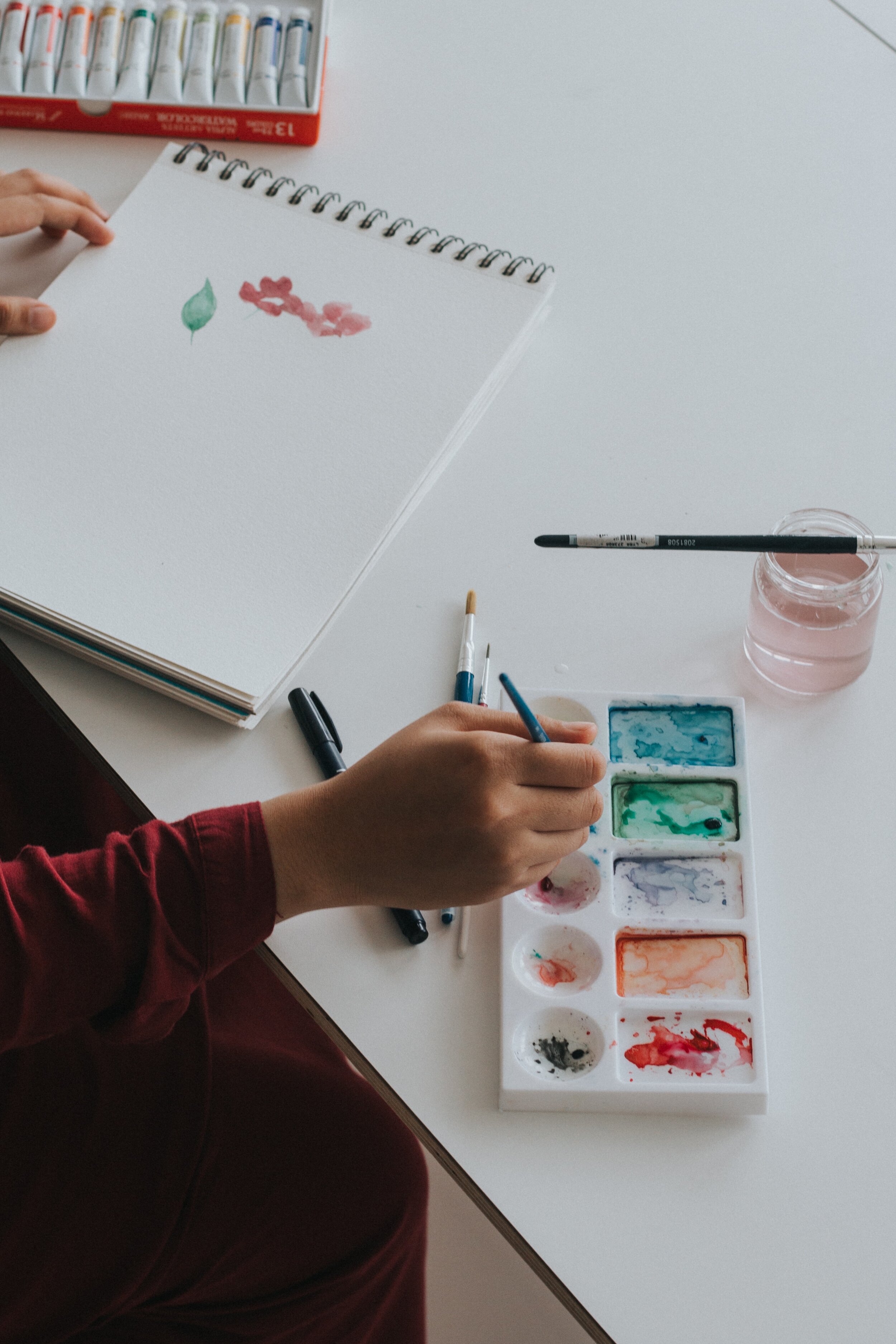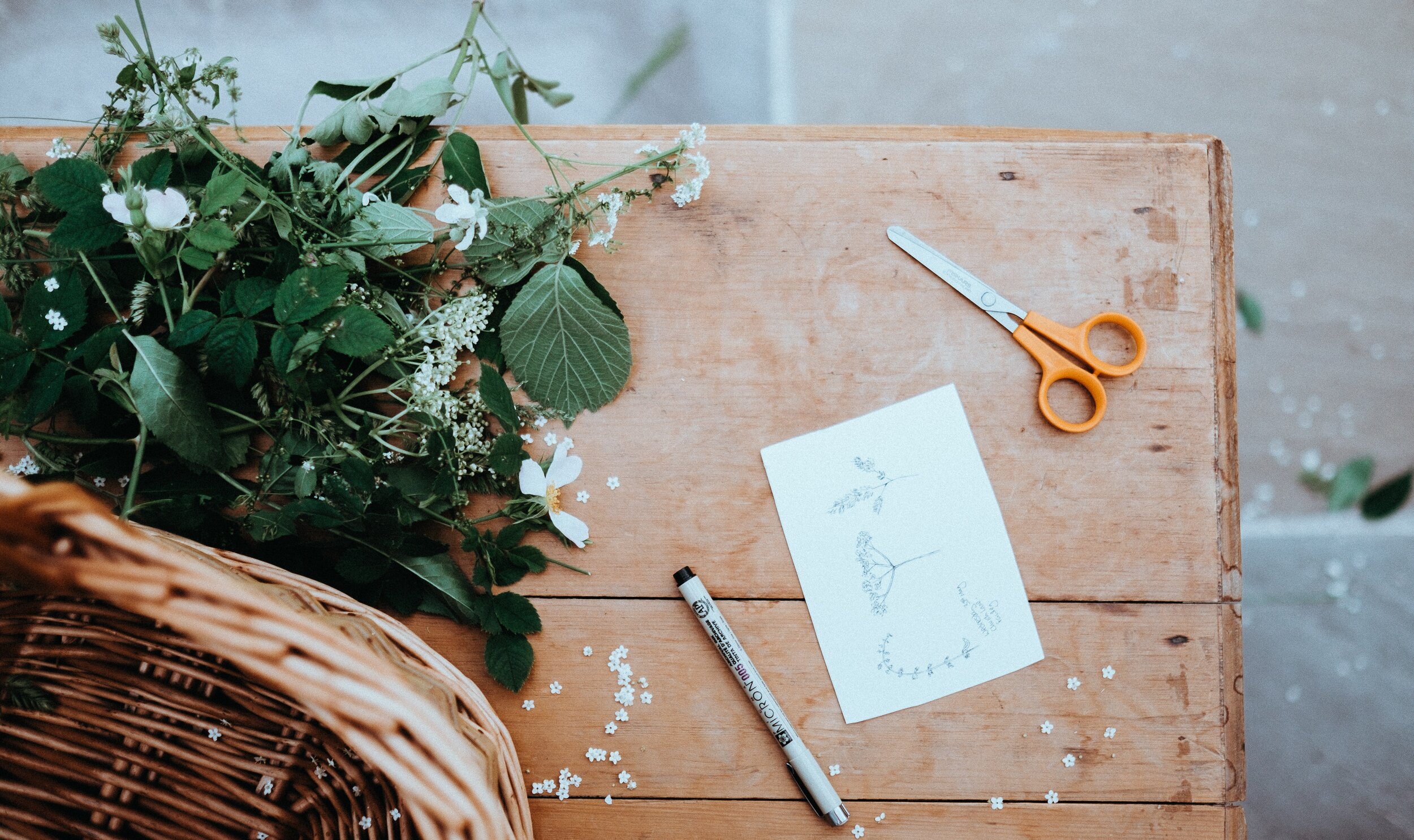*Updated June 2022
Kat has already written a great article about how to “Sell and Market Your Work in 5 Simple Steps” so if you haven’t read that post yet, I recommend that you start there. Once you've gotten those key basics down, you can start using these 5 additional tips to help you sell successfully. These are easy-to-implement strategies and mindset shifts that will help you promote your artwork with confidence, negotiate and close sales, and build relationships with your collectors!
Sell your art online with these 5 tips:
1. Have your prices ready.
If it is your first time offering your art for sale online (or in person), it is important that you anticipate that you’ll be making sales and plan for them in advance by having your prices set. Trust me, if you’ve put in the effort to make your best work, people will start to ask about how to buy it. So, make it simple for them to add their favorite piece to their collection rather than having to come up with a number on the spot and risking under or overpricing.
There are several ways to come up with prices based on the size of the work, time spent, cost of materials used, or a combination of these and other factors. Since there aren’t really standard industry-wide rules on pricing, it can get confusing if you’re just starting out. If you think a formula would be most helpful for you, here is an art pricing calculator that you can try out. I also taught a one hour in-depth pricing class for The Art Queens community that Kat launched in 2020. Join the membership to get access to this recording and all of the other sessions taught by industry experts including Danielle Krysa of The Jealous Curator and painter Erika Lee Sears. Finally, Kat and I have launched our second book, “The Complete Smartist Guide”, which has a whole chapter dedicated to how to price your art.
Once you have chosen the pricing structure that is the best fit for you and your work, make sure to create a price list and save it somewhere that you’ll be able to easily access it when inquiries start coming in. You can make various price lists for each series of work that you have, for pieces of a certain size, and for what you would charge for commissions (hint: always charge more for commissions and custom work!). Another simple tip would be to list them directly on your web shop if you feel comfortable doing so. Numerous artists and small galleries do this as it allows buyers to quickly see if what they are interested in is within their budget.
2. Be confident in your work.
Even though we all grew up hearing the phrase ‘starving artist’, there are so many creatives working today who have carved out their own niche in the arts and are thriving. This myth should officially and forevermore be considered debunked! That said, I know it’s hard not to worry about putting your artwork out for all of the world to see and not having it result in any likes or sales. But the biggest secret to overcoming this mental roadblock is to remember that if your ideal outcome doesn’t happen right away, it is simply because the right people haven’t seen it yet. Building an audience and a list of collectors takes time so just keep working at it and you’ll eventually begin to see better results.
Don’t let the fear take over! Some artists let this stop them from sharing their work at all or hesitate when sharing prices with their potential collectors. Do your best to state your prices firmly and with conviction rather than immediately backtracking or offering extra discounts. It can make you sound like you don’t believe in the value of your work and if you can’t, why should any of your potential clients?
Always remember that what you create has value. When you share your work with confidence, people pick up on that energy and will want to invest in what you make!

3. Don’t worry if you have a small audience when you start.
Artists can get caught up in the social media numbers game, but you really don’t need tons of followers or subscribers on your mailing list to start making steady sales. The vast majority of those same artists who you see online with big audiences started from nothing! They invested a lot of energy into building up their following over time and you can too. Also, you can ask any of them and I’d bet almost 100% would say that they’d rather have fewer followers who are likely to make consistent purchases than more who are just fans. It’s nice to get recognition for the work that you do, but focusing on connecting with people who are truly interested in supporting your art versus as many people as possible will be better for you in the long run.
Again, this is where consistency is key. Post regularly, tell your unique story, send out quality emails, and treat your early customers well. This will all pay off eventually through referrals, shares, media features, and so much more!
4. Follow up!
How many times have you forgotten to reply to someone or read a message and responded only in your head? This happens to your potential collectors too! You’re really not bothering anyone if you follow up after you responded about their initial inquiry to make sure that they received your message or to ask if they have any further questions. This can also be a chance to ‘sweeten the deal’ with a small discount or free shipping if that is something that you are willing to offer (although you can also wait until they ask to avoid devaluing your work, as mentioned previously). I honestly can’t tell you how many sales, jobs, new opportunities, media features, and more have come about from me sending that one additional email. It really makes a difference!
While there are some books I’ve read that say you should follow up until you hear a response, I feel that more than two to three times is pushy. Follow up about a week after the initial communication and if you choose to send a second one, you can do it two weeks after the first follow-up note. Be courteous and professional and try not to get frustrated if you don’t hear back. In my experience, some clients will end up making a purchase months or years later. If it’s meant to be, it will be.
5. Add personality to your packaging.
We all know that once someone has decided to purchase something from you, it should be shipped in a timely manner and always with insurance. However, this is also an opportunity to reinforce your brand, show off your attention to detail, and provide top-notch customer service. I’ve had some artworks arrive that truly feel like opening a present! These artists may wrap their work in branded or colorful packaging, include a small extra gift, or send a handwritten thank you card along with the piece that I purchased. This definitely helps me remember them and makes the experience of collecting their art even more special. Doing this doesn’t have to cost a lot and goes a long way in developing relationships with your clients.
I hope that you enjoyed reading about these tips and that using them to build your career helps bring in more sales and success! If you enjoyed this article, I hope you'll also check out “The Complete Smartist Guide”, which covers even more thorough career advice for artists. I also personally offer services to help artists with writing resumes, artist statements and artist biographies. I invite you to check out my website if you’d like to learn more.
Cheers!
Alicia






.jpg)








